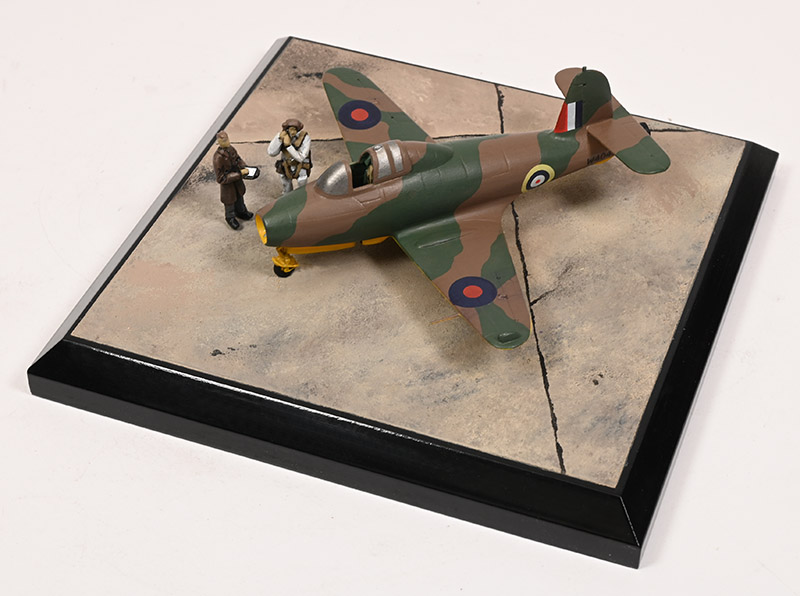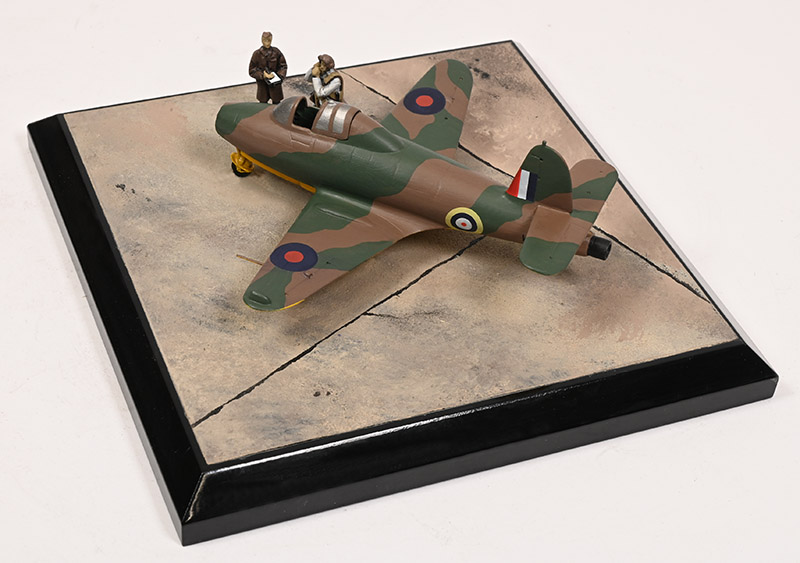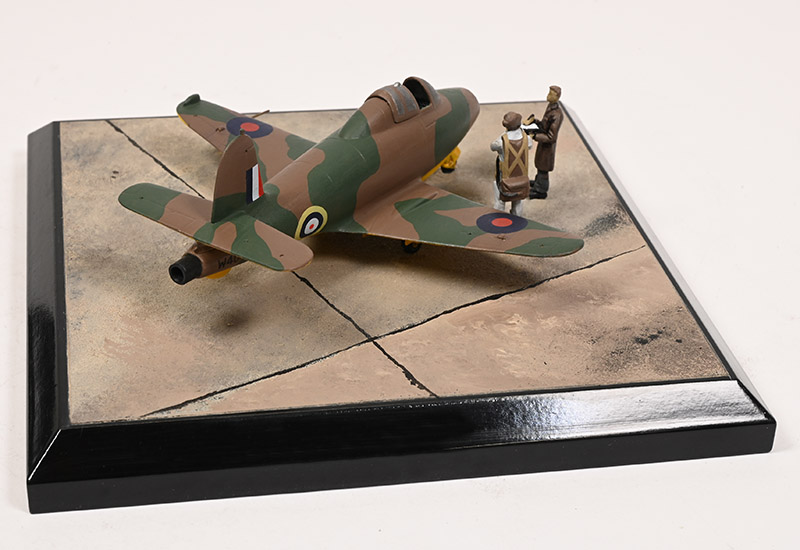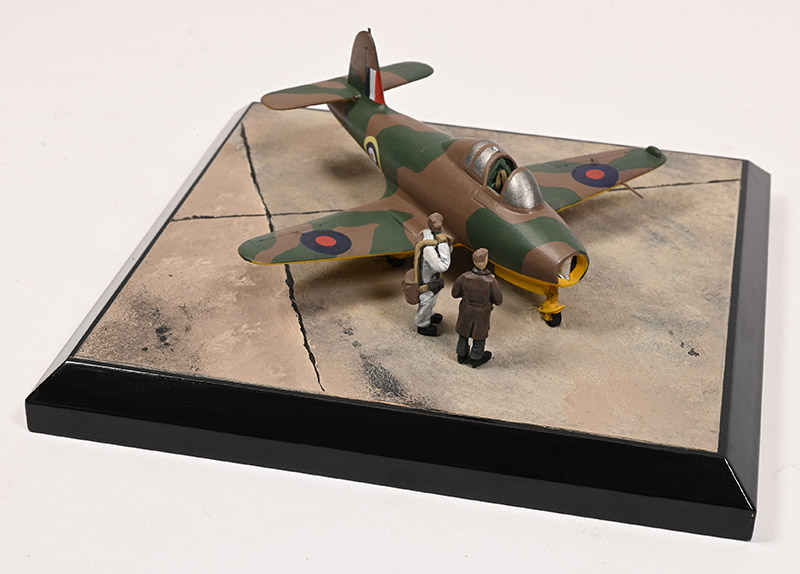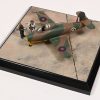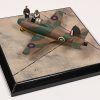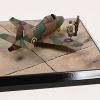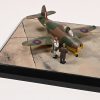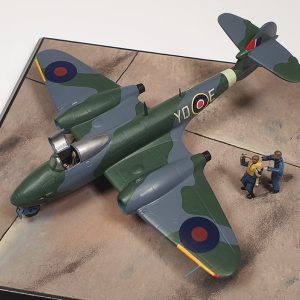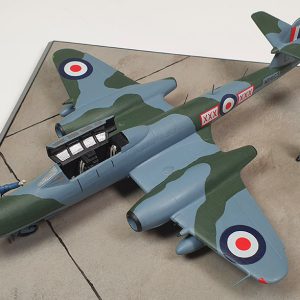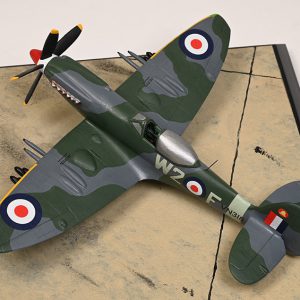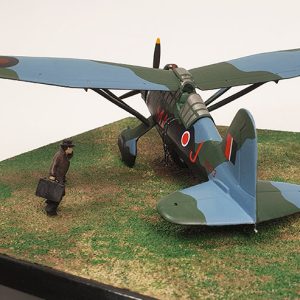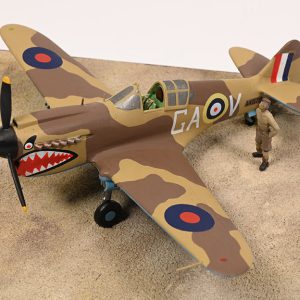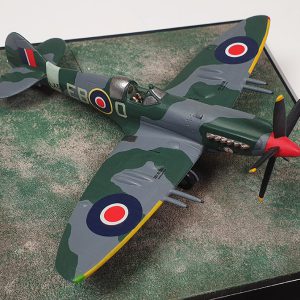Gloster E.28/39 W4041/G Prototype
Flight Lieutenant Gerry Sayer, RAF Cranwell, May 1941
The Gloster E.28/39, (also referred to as the “Gloster Whittle”, “Gloster Pioneer”, or “Gloster G.40”) was the first jet engined aircraft to fly in the United Kingdom. Developed to test the new Whittle jet engine in flight, the test results would influence the development of the Gloster Meteor, Britains first operational jet plane. The E.28/39 name comes from the aircraft having been built to the 28th “Experimental” specification issued by the Air Ministry in 1939.
The development of the turbojet-powered E.28/39 was the product of a collaboration between the Gloster Aircraft Company and Sir Frank Whittle’s firm, Power Jets Ltd. Whittle formed Power Jets Ltd in March 1936 to develop his ideas for jet propulsion, Whittle himself served as the company’s chief engineer. For several years, attracting financial backers and aviation firms prepared to take on Whittle’s radical design was difficult.
In September 1939, the Air Ministry issued a specification to Gloster for an aircraft to test one of Frank Whittle’s turbojet designs in flight. Working closely with Whittle, Gloster’s chief designer George Carter laid out a small low-wing aircraft of conventional configuration. A contract for two prototypes was signed by the Air Ministry on 3rd February 1940 and the first of these was completed by April 1941. The E.28/39 was delivered to Brockworth for ground tests beginning on 7th April 1941, using a non-flightworthy version of the Power Jets W.1 engine. Some short “hops” of about 6 ft in height from the grass airfield were made. The prototype was incapable of high speed taxi runs because the jet engine was highly inefficient. Following the completion of these ground tests, the aircraft was fitted with a flightworthy engine rated for 10 hours use, and then transferred to RAF Cranwell which had a long runway.
On the 15th of May 1941, at 7.45 pm, Gloster’s chief test pilot, Flight Lieutenant Gerry Sayer flew the aircraft under jet power for the first time from RAF Cranwell, near Sleaford in Lincolnshire. The flight lasted 17 minutes and achieved speeds above 500 miles per hour (800 km/h). The E.28/39 was painted dark earth/dark green camouflage with yellow undersurfaces. Serial number W4041/G was the sole visible identifier applied to the airframe at the time of the first flight. A second aircraft of the same type (W4046/G) would later be demonstrated to Winston Churchill on 17th April 1943.
In 1934, when Hawker took over the Gloster Aircraft Company, Phillip “Gerry” Sayer was appointed as chief test pilot. In October 1942, Sayer departed from RAF Acklington in a Hawker Typhoon to carry out tests of a gunsight involving gun firing into Druridge Bay Ranges, accompanied by another Typhoon. Neither aircraft returned and it was assumed that they collided over the bay. He was replaced as Gloster’s test pilot by Michael Daunt, who would be the first to fly the Gloster Meteor (powered by two de Havilland Goblin engines designed by Frank Halford) on 5th March 1943, again at RAF Cranwell.
In 1946, W4041/G was placed in the Science Museum in Central London, where it is exhibited to this day in the Flight Gallery, albeit in notional markings never used during wartime.


